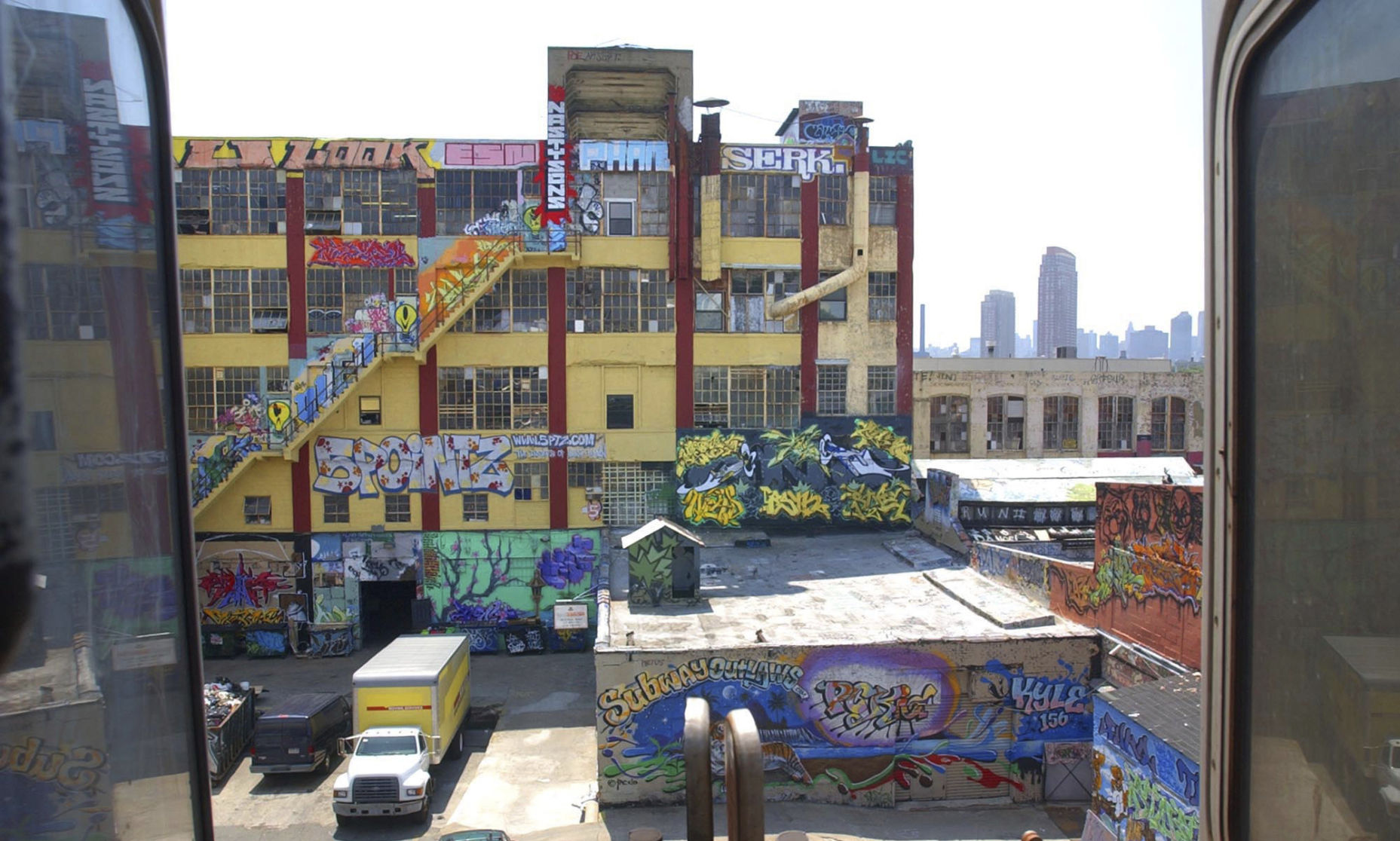NEW YORK (AP) — For two decades, Jerry Wolkoff let graffiti artists use his crumbling Queens warehouse complex as a canvas for their vibrant works. Artists gave the spot the name “5Pointz” — a place where all five New York
NEW YORK (AP) — For two decades, Jerry Wolkoff let graffiti artists use his crumbling Queens warehouse complex as a canvas for their vibrant works. Artists gave the spot the name “5Pointz” — a place where all five New York City boroughs come together — but painters traveled from as far as Japan and Brazil to tag, bomb and burn at what became a graffiti mecca and a tourist destination.
But like most graffiti, it didn’t last. Wolkoff whitewashed the building in 2013 then tore it down to build luxury apartment towers.
Four years later, some of the artists whose work was destroyed are in court, arguing that even though the building belonged to Wolkoff, the art was protected by federal law.
A trial that started Tuesday at a federal court in Brooklyn will determine whether the artists should be compensated for the lost work.
More than 20 artists sued Wolkoff under the Visual Artists Rights Act, or VARA, a 1990 federal statute that protects artists’ rights even if someone else owns the physical artwork.
Barry Werbin, an attorney specializing in intellectual property, said the case is significant because no lawsuit under the statute has been tried by a jury before.
“Juries are very hard to predict, but if their sympathies lie with the artists, that could go a long way,” he said.
Expert witnesses will argue that the 5Pointz work merited protection. A secondary issue is whether the artists could have removed murals from the side of a building if Wolkoff had given them the statutory 90-day notice that the works would be destroyed. The whitewashing was done by surprise, at night.
Scott Haskins, a mural conservator who has worked on everything from 14th-century Italian frescoes to California street art, said in some cases it’s possible to peel a mural off a wall.
“Every situation is different,” Haskins said. “If there’s a complicated layering of paint and it’s kind of thick you have a better chance to get it off.”
Wolkoff, who allowed artists to begin painting his buildings starting in the 1990s, has argued that the work was inherently transient, since the artists continually painted over each other’s work.
“That’s the idea of graffiti,” Wolkoff told The New York Times before the trial began. “There were tens of thousands of paintings there, over the years, and they’d last for three or six or nine months.”
Artists always knew, he said, that he would eventually tear the buildings down and develop apartment towers.
In the years since, street artists began wielding aerosol cans at 5Pointz, graffiti has moved from the periphery to the center of the art world, with work by onetime outsider artists like Jean-Michel Basquiat selling for millions of dollars.
The 5Pointz artists tried unsuccessfully to get a court order to halt the demolition, and then sued for monetary damages. They have cited favorable opinions from museum directors and commissions from leading brands like Heineken and Swatch to prove their work’s market value.
Jonathan Cohen, the artist known as Meres One who curated the 5Pointz graffiti under an agreement with Wolkoff, has had works shown at the Orlando Art Museum and several New York galleries, according to his site. Other 5Pointz artists have had solo gallery shows and mural commissions and their work has appeared in TV shows and ad campaigns.
Does that mean their 5Pointz artworks had recognized stature and should have been protected under VARA?
“It’s really up to judicial interpretation,” said Philippa Loengard, deputy director of the Kernochan Center for Law, Media and the Arts at Columbia University. “Who determines what recognized means? And stature? Is it a local standard? Does it have to be nationally known? There’s no guideline for what is recognized stature, so it really is up to the court.”
Wolkoff has said he respected the artists who have sued him and was a fan of their work.
And whether the artists like it or not, their work will be commemorated in the two residential high-rises now under construction at the 5Pointz site in Long Island City. Renderings on the website of interior designers Mojo Stumer Associates show common spaces lavishly decorated with graffiti-style art.


